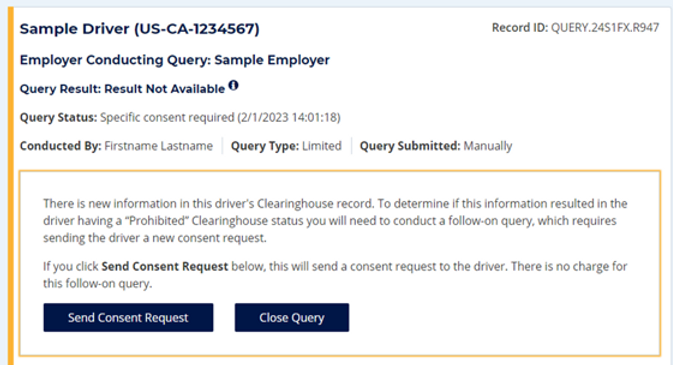The federal Drug & Alcohol Clearinghouse has now been in place since January 2020. Since that time, regulated motor carriers who employ CDL drivers have been obligated to run Clearinghouse queries on all prospective and existing drivers to ensure they have incurred no disqualifying drug or alcohol violations. But what happens if a CDL driver violates the drug/alcohol testing rules after the carrier runs a required query? Is the carrier notified of that fact? And if so, what must it do after receiving such a notification? That’s what we’re addressing in this article.
Learn more in this episode of Taking the Hire Road
Understanding Clearinghouse Queries
As noted, the Clearinghouse is a repository of drug/alcohol testing data for all CDL drivers operating in the U.S. The Clearinghouse functions through regulatory reporting and querying obligations. Information concerning a commercial driver's positive test result, refusal to test or other violation gets reported to the Clearinghouse and associated with the driver's CDL number. That information then appears in any queries run by subsequent employers during the hiring process, by law enforcement during roadside inspections, and by state drivers' licensing agencies when issuing or renewing the driver's CDL.
For their part, motor carriers have an obligation to run two different types of Clearinghouse queries on any CDL drivers they employ or engage:
- Full (Pre-Employment) Queries: Full Clearinghouse queries reveal the nature of any prior drug or alcohol testing violations for a particular driver and whether the driver has completed the return-to-duty process. Employers are obligated to run full queries as part of the onboarding process for prospective CDL drivers, as well as in situations where a limited query on a particular driver reveals that information exists in the Clearinghouse. If a full query reveals that a driver has a prior drug or alcohol testing violation and the driver has not completed the return-to-duty process, the driver will be in “prohibited” status and must not be used to perform any safety-sensitive functions.
- Limited (Annual) Queries: Limited Clearinghouse queries reveal only if information about a particular CDL driver exists in the Clearinghouse, not the substance of that information. Employers are obligated to run limited queries on all existing CDL drivers at least once every 12 months. If a limited query reveals that information about a particular driver exists within the Clearinghouse, the employer must then run a full query on that driver within 24 hours. If that full query is not run within that time frame, the driver must be removed from safety-sensitive functions.
Recent Clearinghouse Data
The FMCSA publishes monthly Clearinghouse reports. These reports detail, among other things, how many CDL drivers have tested positive for drugs or alcohol, the types of drugs causing the biggest problems, and how many commercial drivers are currently in prohibited status.
The numbers are shocking. According to the June 2023 Clearinghouse report, the agency received nearly 70,000 violation reports in 2022, up from around 60,000 the year prior. Since its implementation, the Clearinghouse has received a total of 217,409 violation reports. Far and away, the most common substance identified in positive test results is marijuana, with nearly 121,000 such positive test results reported over the past three years. Perhaps most shockingly of all, as of July 1, 2023, the Clearinghouse reports there are currently 139,308 CDL drivers in “prohibited” status, meaning they are ineligible to perform safety-sensitive functions.

Clearinghouse Notifications
Prior to March 2023, the Clearinghouse did very little to automatically notify employers when the status of their drivers changed. Employers would only receive notifications of a driver’s status change if it occurred within 30 days after the employer ran a full pre-employment query. But this all changed in March of 2023.
Now, employers receive automatic notifications anytime a driver's status changes within a full 12 months after the employers have run either a full or limited query.

Sample Clearinghouse Notification
Importantly, these types of Clearinghouse notifications indicate only that a driver's status has changed. They do NOT indicate the nature of the change. For that reason, once a carrier receives a status-change notification, it must run a follow-on full query to get the underlying details about the status change. According to FMCSA, such follow-on queries must be run within 24 hours after the carrier receives the status-change notifications, or else the driver must be removed from safety-sensitive functions (i.e., driving). Failing to do this can lead to substantial fines if the carrier is subsequently audited.
This revision to the Clearinghouse's notification system is significant because it fills a gap that existed in the system and allowed prohibited drivers to slip through the cracks. Carriers should be vigilant for these types of notifications and should take care to swiftly address any they happen to receive.
This article is courtesy of Brandon Wiseman, transportation attorney and president of Trucksafe. Trucksafe is a leading provider of DOT consulting services and online compliance courses and content. Learn more at www.trucksafe.com.









